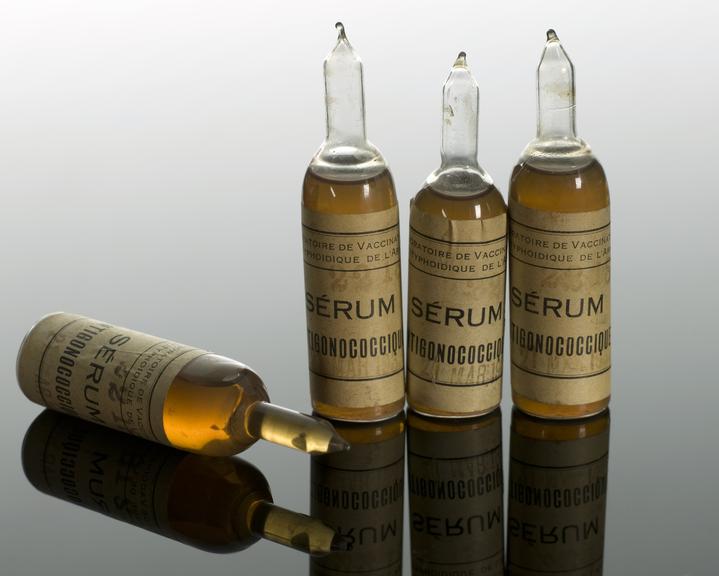
Four ampoules of gonococcus serum, Paris, France, 1932-1933

Glass ampoules, 4, of gonococcus serum, by Laboratoire de Vaccination Antityphoidique de l' Armee, French, 1933
Gonococcus is the name of the bacteria which cause the sexual transmitted infection gonorrhoea. This ampoule of serum contains antibodies from an animal infected with the disease. This treatment was replaced during the Second World War by the use of sulphonamide drugs and then penicillin, which easily cured the disease.
The name of the Laboratoire de Vaccination Antityphoïdique de l’Armée, which made this vaccine, translates as the “Army Laboratory for Anti-Typhoid Vaccination”. Gonorrhoea, like typhoid, was an old enemy of soldiers. Prevention of disease aimed to ensure that soldiers were at peak physical condition to fight.
Details
- Category:
- Public Health & Hygiene
- Collection:
- Sir Henry Wellcome's Museum Collection
- Object Number:
- A629773
- Materials:
- glass
- Measurements:
-
overall: 90 mm 25 mm, .03kg
- type:
- immune serum




